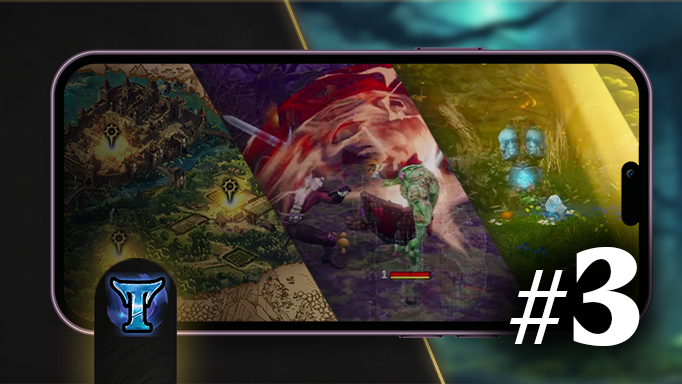Damian Heinrich - 2D Graphic Artist
- Damian Heinrich
- Jul 23
- 3 min read

1. What do you work on in the project?
As a 2D artist in Toria, I’m responsible for most of what you see on screen—primarily the adventure, team‑management, and exploration elements. I have to be as versatile as a Swiss Army knife: I pop up wherever the game world needs illustrating, bringing it to life with animation or designing the UI for one of the many screens.

2. Which graphical element has been the most interesting challenge for you?
By far the most immersive task is building the scenery for our adventure areas. In the game, you explore them as a procedurally unfolding panorama. When I create these, I get to control the parallax effect and craft that sense of depth by strategically layering the foreground, midground, and background. Hundreds of illustrated pieces come together into a single, rich landscape—it’s a bit like decorating a Christmas tree. What really tickles me is that I get to carve out my own little slice of this world. I love asking myself: What kind of flora and fauna should inhabit this region? Which architectural details should we plant there? And above all—what mood do I want to spark in the players?

Storytelling is absolutely key. I weave in details that lend each region its own credibility. For example, if poachers roam a particular forest, players should stumble upon the remains of their camps, abandoned tools, and other fun stuff. This approach gives the sense that the area lives its own life and is constantly changing—the world begins to tell its own story.

My true magnum opus, however, is the animated intro to our game. This short film blends every skill I’ve got—each frame is a carefully crafted snapshot of an engaging tale. It’s here that I teamed up tightly with our musician Marcin, syncing image and sound to give players an unforgettable welcome to the world of Toria.
3. What tools do you use every day, and what exactly do you do in them?
Ah, nothing beats a trusty sketchbook and pencil… But let’s be realistic—for a smooth workflow, I paint in a digital environment, most often in Photoshop. Not just because I’ve been using it since I was a kid, but primarily because it offers the precision I need for fine‑tuning graphics—especially for UI elements.

I consider myself a traditionalist at heart; I firmly believe that, regardless of the medium, solid fundamentals are the key to a stellar final result. When I’m designing the game’s visual elements, I never skip the research phase: building a library of reference images lets me sketch ideas that fit seamlessly into the world of Toria. Consistency is everything—that means keeping each region coherent in artistic style, logical layout, and visual hierarchy.

And animation? Sure, the 3D artists rock the character fights in the arena, but I’m the one breathing life into 2D: avatars of our heroes and the colorful (or suspicious) merchants you meet in towns and along the road. Many of these animations are created directly in the Unity engine. For the UI, my animated mockups act like mini‑prototypes, helping to visualize even our wildest concepts and making life a whole lot easier for the programmers.

4. Do you have any personal graphic “tricks” that make your work easier?
Haha, over the years I’ve piled up so many little tricks I could write an entire book—but seriously, the most important trick is critical thinking. If you can view your work through the eyes of a total stranger, you’ve already scored a win. In visual art it’s so easy to go crazy on your own ideas: stare at the same image, perfectly still, for hours, and it starts to burn into your eyes like a Polaroid.
That’s why I constantly juggle tasks and hop between projects—my secret weapon against “blind spots.” A super‑useful technique I recommend to every artist is flipping your workspace horizontally. It instantly reveals asymmetries and the most obvious goofs. I actually learned this back when I was painting oil landscapes—only back then I used a real mirror instead of Photoshop.
5. Do you prefer working with something tried‑and‑true, or do you like throwing yourself new challenges?
I love learning new skills—experience has taught me there’s no better teacher than practice. I mentioned earlier my Swiss‑Army‑knife approach: the broader your understanding of the whole production pipeline, the faster you’ll collaborate in a team.
Personally, monotony doesn’t do it for me—I’m always looking for ways to weave my own preferences and experiences into creative work. Every new tool I pick up expands my arsenal and makes the final result even more authentic.









Comments